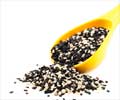Using absorbing dye molecules, scientists have found a way to make live animals temporarily transparent, enhancing optical imaging techniques for medical research.

- Absorbing molecules in dyes reduces light scattering, making live tissues temporarily transparent
- This technique allows deep tissue visualization without invasive surgery
- A breakthrough in medical imaging, paving the way for new research possibilities
Achieving optical transparency in live animals with absorbing molecules
Go to source)? In a groundbreaking development, researchers have found a way to make animals almost as transparent as Harry's cloak would make him invisible. By using specific dye molecules, scientists are now able to render the skin, muscles, and even internal organs of live animals transparent, opening up new frontiers in biomedical imaging. This breakthrough technique is not just a fantasy come to life—it’s a real-world application that could revolutionize how we study and understand the complexities of living organisms.
Strongly absorbing dyes can make animal tissues transparent, revealing hidden structures! #biomedicalimaging #medindia’
Understanding the Challenge of Optical Imaging in Biological Tissues
Optical imaging is a powerful tool in biology and medicine, but it faces significant challenges when it comes to imaging live tissue. The complex structure of biological tissues causes light to scatter, making it difficult to see inside and understand the intricate processes happening within. This scattering occurs due to mismatches in the refractive index (RI) among different tissue components, limiting how deeply we can image using light-based methods.Although various techniques like two-photon microscopy and near-infrared fluorescence imaging have been developed, they often fall short in terms of penetration depth and resolution, especially in living organisms. This has led scientists to explore new ways to achieve optical transparency in live animals, which could revolutionize how we visualize biological processes.
The Counterintuitive Approach: Using Absorbing Molecules
In a surprising turn of events, researchers have discovered that strongly absorbing molecules can actually help achieve optical transparency in live animals. This concept might seem contradictory at first—after all, wouldn’t absorbing molecules block light rather than aid in transparency? However, the science behind it is rooted in the principles of physics.Using the Lorentz oscillator model, which describes how the dielectric properties of materials interact with light, the researchers predicted that certain dye molecules could increase the refractive index of water (a major component of biological tissues) when dissolved in it. Specifically, they focused on dyes that absorb light in the near-ultraviolet (300 to 400 nm) and blue (400 to 500 nm) regions of the spectrum. These dyes, when absorbed, can effectively reduce the RI contrast between water and other tissue components like lipids, thus reducing light scattering and enhancing transparency.
Experimental Success: Making Live Mice Transparent
To test their theory, the researchers used a common food dye called tartrazine, which is approved by the U.S. Food and Drug Administration. They dissolved this dye in water and applied it to live rodents. Remarkably, the dye solution temporarily made the skin, muscle, and connective tissues of these rodents transparent. This transparency allowed the researchers to see deep into the tissues with high spatial resolution, down to the micrometer level.For example, when the dye solution was applied to the abdomen of a live mouse, the typically opaque tissue became transparent, revealing the fluorescently labeled neurons in the gut. This transparency enabled the scientists to observe gut motility and create detailed maps of movement patterns in the mouse’s digestive system. The approach also proved effective when applied to the scalp, allowing visualization of cerebral blood vessels, and to the hindlimb, where it provided clear images of muscle sarcomeres.
Broader Implications and Future Potential
This discovery opens up exciting possibilities for biomedical imaging. By using absorbing dye molecules, researchers can visualize deep-seated tissues and organs in live animals without the need for invasive surgery or the use of artificial windows. The technique could be used in a wide range of applications, from studying brain activity to monitoring the progression of diseases in real-time.However, the method does have some limitations. While the dyes reduce light scattering, they do not eliminate it entirely. Additionally, the depth of tissue that can be made transparent depends on how well the dye molecules diffuse through the tissue. Despite these challenges, the technique represents a significant step forward in the quest for better optical imaging methods.
In summary, the use of strongly absorbing molecules to achieve optical transparency in live animals is a groundbreaking development in the field of imaging. By leveraging the principles of physics, researchers have found a way to temporarily render tissues transparent, allowing for unprecedented visualization of biological processes in living organisms. This approach has the potential to transform medical imaging and deepen our understanding of complex biological systems, paving the way for new discoveries and innovations in healthcare.
Reference:
- Achieving optical transparency in live animals with absorbing molecules - (https://www.science.org/doi/10.1126/science.adm6869)
Source-Medindia












